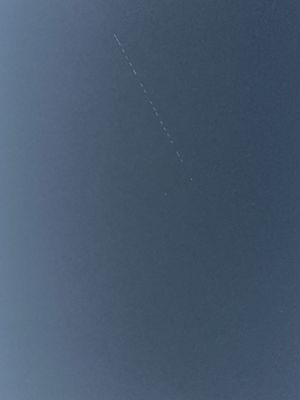'Strange' lights seen in sky over Shropshire leaving resident wondering what they are
'Strange' lights have had a Shropshire Star reader scratching his head over what he saw.
The reader told us that he saw 'weird laser like lights' coming over from Welshpool towards Shrewsbury and told us about it on Sunday evening.
He added that they "got to a certain height then just vanished."
It's not the first time that so-called strange lights have been seen over Pontesbury.

In 2018 a group of lights was seen hovering over Habberley, when the spotter mused that: “They were not aircraft of any kind and having served in the forces for over 30 years I can bet my pension they are not known to the military."
So, just what were those strange lights? Little green men from outer space or something a little more earthly in origin?
Similar lights in the past have been shown to be from meteors, and it just so happens that the Orionid meteor shower peaked on Saturday and will last until November 7.
Meteors are tiny specs of dust that burn up when they hit the earth's atmosphere. The Orionids come from the remains of Halley's Comet.
And more recently, lines of satellites have been shown to be the cause of lines of lights moving across the sky.
Satellites are set to become a big source of night time sightings in the future.
Academics at the University of British Columbia say that we could see a vast expansion, perhaps up to a million satellites in orbit.
In a paper posted on Science the academics have called for controls to be put in place. The paper can be read here: science.org/doi/10.1126/science.adi4639
The paper, posted earlier this month says: "About 4500 Starlink and 630 OneWeb satellites are on orbit as of July 2023, but this is only the beginning.
"Recent filings for radio spectrum with the International Telecommunication Union (ITU) suggest that a dramatic increase in satellite numbers is possible, much more than the tens of thousands often reported.
"Constellations much larger than SpaceX’s Starlink have been filed, including a 337,320-satellite constellation named Cinnamon-937 that was filed in September 2021.
"By treating orbital space as an unlimited resource, humanity is creating serious safety and longterm sustainability challenges to the use of low Earth orbit (LEO), including science conducted from space and the ground.
"The ITU filings are the warning, and also part of the solution. There is urgent need for the ITU and its member states to adopt meaningful controls."




